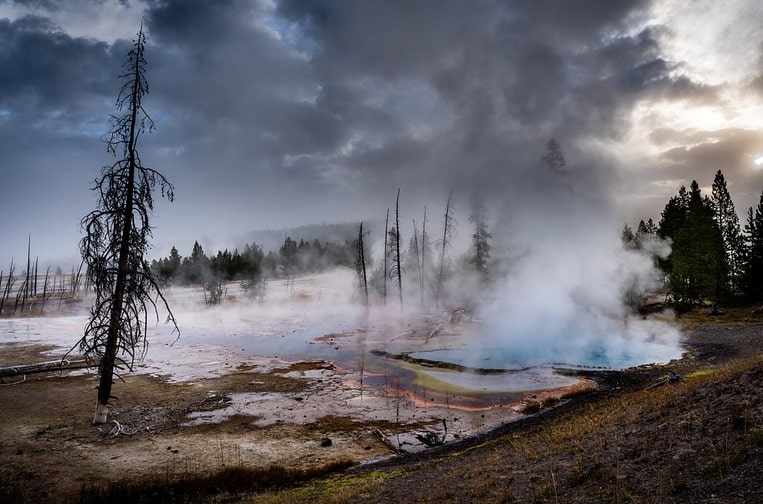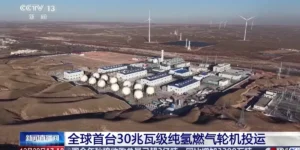The Many Uses Of Geothermal Energy

Geothermal energy has many uses today starting with direct use and continuing with clean energy production, residential heating, milk pasteurizing and many others.
Why Is Geothermal Energy So Useful For Mankind?
Geothermal energy is considered a smart and reliable source of power for our civilization because in contrast to solar and wind, geothermal is available 24 hours per day, and 365 days per year.
The term ‘Geo’ means earth, while the term ‘Thermal’ means heat, so geothermal energy is the heat from the earth.
The deeper we go, the temperature increases because we get closer to the hot core of the planet.
The crust base has a temperature of about 1,000°C (1,832°F), the mantle has a temperature around 4,000°C (7,232°F), and the core is almost as hot as the surface of the Sun, reaching a temperature of around 5,430°C (9,800°F).
This heat produced 24/7 by the core of our planet, warms water that has seeped into underground reservoirs.
This free, renewable and clean source of energy and heat, can be found in geothermally active areas like Iceland, Italy, Austria, Kenya, Costa Rica and in countries located around the Pacific Ring of Fire.
To access this free and sustainable resource that comes in the form of steam and hot water, we have to drill deep in the earth’s crust, or if we are located at the tectonic plate boundaries, we can access it directly because the hot steam and water will be available at the surface.
What Is Geothermal Energy Used For Today?
Geothermal energy is used today in a variety of sectors, from direct use to clean electricity generation, from residential heating, greenhouse heating for heating water at fish farms, and from drying crops, to powering different industrial processes such as milk pasteurizing.
Direct Use
Mankind has started to use the heat produced by low-temperature geothermal energy reservoirs, thousands of years ago.
A good example of this would be the Hot Springs of Bath in England, established by Roman engineers in AD 60.
The geothermal resource was used here to create recreational baths, at a temperature of about 45°C (113°F), and even to heat some buildings.
Beside bathing, hot springs or geothermal geysers have been used even earlier by ancient people for cooking and even loosening feathers and skin of the hunted animals.

Geothermal resource in the Yellowstone National Park, image source: pixabay.com

Geothermal geyser in action, image source: pixabay.com
Hot springs are still very popular today, being used as spas.
In Colorado, the hot water provided by the local geothermal resource is used at alligator farms to help them thrive in the winter when the water in ponds otherwise would freeze.
Today, we use directly the geothermal resource in a more complex way. Modern direct-use systems, rely on a well that is drilled into the geothermal reservoir to provide a steady supply of hot water.
The hot water will come through the well and is used directly in different applications.
Clean Electricity Generation
Today, there are 60 geothermal power plants in the U.S., and about 29 countries are using geothermal energy for energy and heating.
The geothermal resource suited for electricity production is confined to very specific areas on the planet, where naturally porous, fractured rocks create an underground reservoir of hot water, allowing the heat from the Earth’s core rise to the surface.
All geothermal power plants use wells drilled in the underground rock to reach the geothermal resource. The hot water is pumped up, and the steam is used to spin a turbine. The turbine is connected to a generator, which produces clean electricity.

Geithermal power plant in Western Asia, image source: pixabay.com
Once used for electricity production, the water is pumped back in the underground reservoir to be reheated by the Earth’s core. This way, the geothermal reservoir remains a viable resource of clean electricity for the power plant a very long time.
Countries generating over 15% electricity from the geothermal resource include: El Salvador, the Philippines, Kenya, Iceland, Costa Rica and New Zealand.
However, to make geothermal a major source of clean power for mankind, we have to use this resource in areas where hot steam and water are not available at the surface.
Residential Heating
In countries where the geothermal resource is available at the surface, the renewable resource is used to heat buildings at a lower cost compared to solar and wind power. Solar and wind needs to be converted into electricity first and only after, the electricity will be used to power a device that generates heat for the building.
Geothermal instead, can be used directly (the hot underground water) to heat buildings at a much lower cost and way more efficiently than using solar or wind because the geothermal resource is way more reliable (works 24/7).
A good example here is Iceland. Bordering the Arctic Circle, in this insular country we can find some of the largest glaciers in the world. However, under the cold sheet of ice, while the underground rock is bursting with heat.
Iceland is one of the most geothermally active places in the world, because the hot water coming from the underground, is transported through pipes to towns and cities across the country.
In homes, hot water (73°C or 163°F) flows directly from taps, and is used to heat about 90% of Iceland’s homes, and also the streets.
The hot water believed to have health benefits, is also used to fill the country’s popular pools such as the Blue Lagoon (a famous therapeutic spa in Iceland).
Greenhouse Heating
In Kenya, the hot steam coming from geothermal wells is used to heat acres of greenhouses where roses are produced.
The underground heat controls here the nighttime humidity that otherwise would cause fungus growing on the plants.
Without heat, in the clear nights in January, February and March, the temperature in the greenhouses would decrease below freezing.
No fungicide needs to be sprayed because the relative humidity in the greenhouse is controlled and kept below 85%.
The geothermal resource produces here direct benefits because it reduces the production costs while improving the quality of the plants.
The hot water and steam produced by the geothermal resource are also used in many other countries across the planet (Iceland, the U.S., etc.) to produce fruits and vegetables in greenhouses.
Heating Water At Fish Farms
In Colorado, Oregon and in many other U.S. states, Canada, and around the world, hot water coming from geothermal underground reservoirs is used to keep the water in alligator and fish farms optimal during the winter, and this reduces the operation cost, while increasing the productivity.
Drying Crops
The heat provided by the geothermal resource is also used today to dry crops quicker. This prevents the production of mold in storage areas.
The process involves direct contact of the product (grain, fruits, vegetables, etc.) with the warm air at a relatively low temperature (35 to 80°C or 95 to 176°F). The hot water provided by the geothermal reservoir is used as an energy source to heat the air, which will dry the agricultural products.
Milk Pasteurizing
Across the planet where the geothermal resource is available, several milk processing plants have been built to pasteurize milk using geothermal heat.
Several facilities built in the United States, Romania, Iceland, New Zealand, etc. are using geothermal power to produce brown way cheese and milk powder, in a very efficient way.
Hot water produced by the local geothermal resource, helps them to make huge savings on energy bills.
Conclusion
The geothermal resource located at a depth of only 6 miles (10 km), is more than enough to power our entire civilization with clean and reliable energy and heat every day.
We only need to tap into this huge potential of clean power that is available right under our feet, does not pollute the environment and is available 24/7 and 365 days per year.






